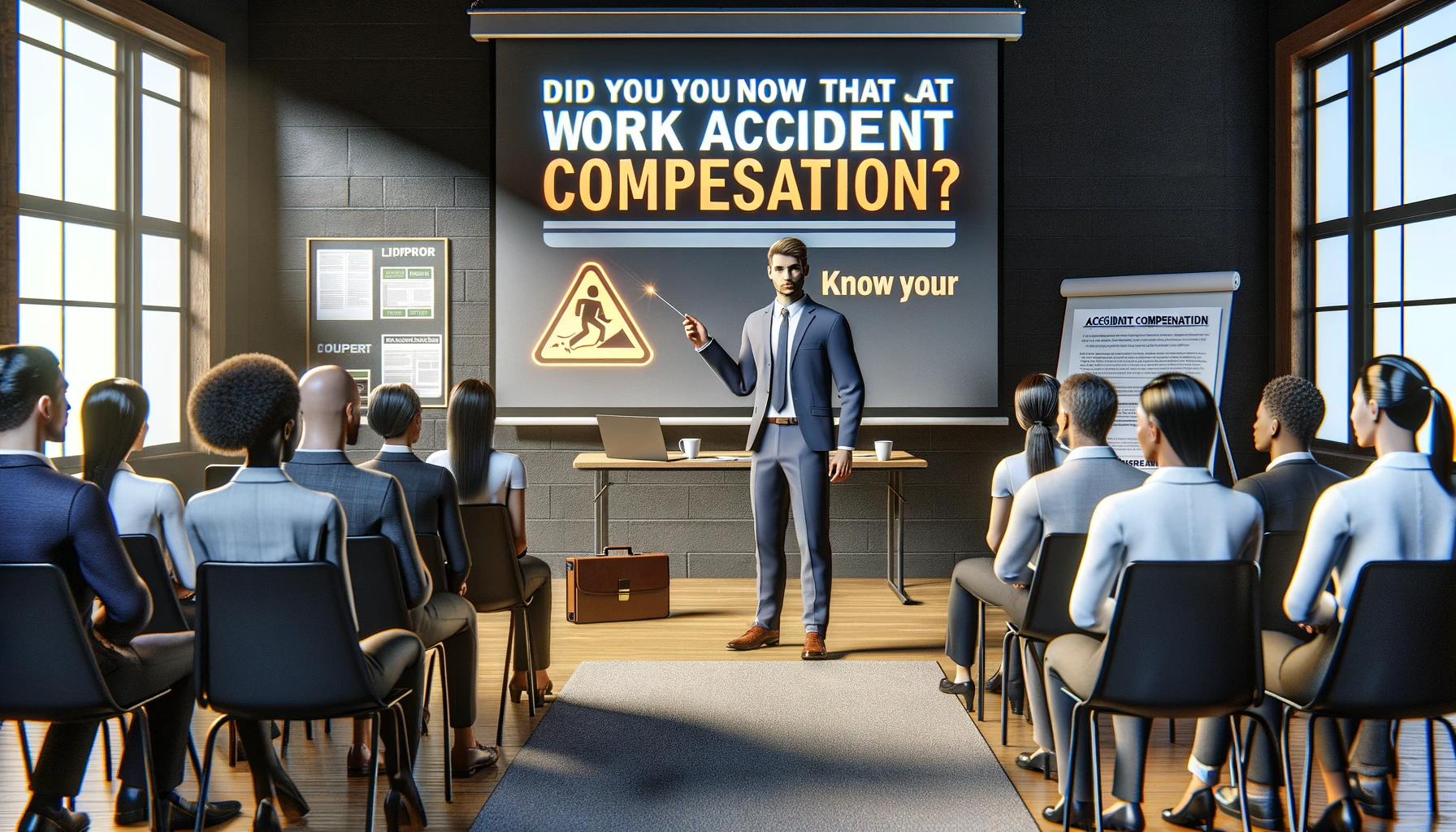Hey there! If you're looking to keep your workplace as safe as possible, you've come to the right place. Workplace accidents are a serious buzzkill, not to mention they can be costly and dangerous. So, let's dive into some top-notch tips to help you prevent these unwelcome incidents and maintain a safe work environment.


Understanding the Basics of Workplace Safety
First things first, let's break down what workplace safety means. It's all about creating an environment where the risk of injury or illness is as low as possible. Ensuring workplace safety is not only an ethical responsibility but also a legal requirement in many places. Compliance with guidelines set by regulatory bodies such as OSHA (Occupational Safety and Health Administration) is a fundamental aspect of workplace safety. These guidelines exist to keep everyone out of harm's way, providing a comprehensive framework for maintaining a safe work environment.
Safety Training Programs
One of the best ways to keep your team safe is through education. Safety training programs and safety awareness campaigns can be total game-changers. These programs equip your crew with the knowledge they need to avoid accidents and handle any tricky situations that might pop up. Regular and well-designed safety training sessions can cover a wide range of topics, including emergency procedures, safe equipment operation, and proper handling of hazardous materials. By investing in the education of your employees, you empower them to recognize potential risks and respond appropriately, thereby reducing the likelihood of workplace accidents.Hazard Identification and Risk Assessment
Now, onto spotting the trouble before it spots you. Identifying potential hazards and carrying out a thorough risk assessment are key steps in creating a safer work environment. This process is like playing detective in your own workplace, looking for anything that might pose a risk. Hazards can take various forms, from exposed electrical wiring to slippery floors or improperly stored chemicals. Conducting a risk assessment involves evaluating the likelihood and severity of potential hazards, allowing you to prioritize and address the most critical issues first. This proactive approach not only prevents accidents but also ensures regulatory compliance.Implementing Safety Protocols and Policies
Once you've spotted those risks, it's time to do something about them. That's where safety protocols and policies come into play. Crafting clear rules and making sure everyone knows the drill can really help in keeping your workplace accident-free. Establishing and communicating safety protocols and policies is essential to create a culture of safety within your organization. These guidelines can cover a wide range of topics, including emergency response procedures, equipment maintenance schedules, and reporting mechanisms for safety concerns. By implementing these policies, you provide employees with a roadmap for staying safe, reducing the chances of accidents resulting from negligence or lack of awareness.The Role of Safety Committees
Ever thought about forming a safety committee? These groups are like the superheroes of workplace safety, taking on the responsibility of keeping everyone in the loop and on their toes when it comes to safety matters. Safety committees consist of employees from various departments and levels within the organization, coming together to address safety concerns collectively. They play a pivotal role in fostering a safety-oriented culture by discussing safety-related issues, conducting inspections, and proposing improvements. The diverse perspectives within a safety committee can lead to more comprehensive safety measures and increased employee engagement in safety initiatives.Personal Protective Equipment (PPE)
PPE is your best friend when it comes to physical protection. Whether it's safety glasses, hard hats, or earplugs, making sure your team has the right gear and knows how to use it is super important. Personal Protective Equipment (PPE) is the last line of defense against workplace hazards. It serves as a crucial safeguard for employees who work in environments where risks cannot be entirely eliminated. PPE includes a wide range of items, from helmets and gloves to respiratory masks and full-body suits, depending on the nature of the job. Proper selection, usage, and maintenance of PPE are essential to ensure its effectiveness. Providing employees with the necessary PPE and training them in its correct use not only reduces the risk of injury but also demonstrates a commitment to their safety. Incorporating these key elements into your workplace safety strategy can significantly enhance your efforts to prevent accidents and maintain a safe work environment. By prioritizing safety education, hazard identification, policy implementation, safety committees, and the proper use of Personal Protective Equipment, you'll be well on your way to creating a workplace where employees can perform their tasks with confidence, knowing that their well-being is a top priority.
Ergonomic Workplace Solutions
Let's delve deeper into the significance of ergonomic workplace solutions. It's not merely about having fancy chairs or stylish desks; it's about prioritizing the well-being of your team and enhancing overall efficiency. Ergonomics is the science of designing the workspace to fit the needs of the workers. It takes into account factors such as seating, desk height, monitor placement, and keyboard positioning to optimize comfort and reduce the risk of strain-related injuries. Providing ergonomically designed furniture and equipment ensures that employees can work comfortably and without unnecessary physical stress. Investing in ergonomic solutions can lead to improved productivity, fewer work-related health issues, and a more contented workforce. When employees are comfortable and free from discomfort, they can focus better on their tasks, resulting in increased job satisfaction and reduced absenteeism.Emergency Response and Accident Reporting
Though nobody likes to dwell on emergencies, preparedness is paramount. Having a well-defined emergency response plan and clear accident reporting procedures in place is half the battle won. An effective emergency response plan outlines what actions to take in case of different emergencies, be it a fire, natural disaster, medical crisis, or any other unforeseen event. It includes evacuation routes, assembly points, contact information for emergency services, and the roles and responsibilities of designated employees during an emergency. Accident reporting procedures are equally vital. They provide a structured process for documenting and reporting accidents, injuries, or near misses. Quick and accurate reporting ensures that incidents are thoroughly investigated, root causes are identified, and corrective actions are implemented to prevent future occurrences. By having robust emergency response and accident reporting protocols, you demonstrate your commitment to the safety and well-being of your team. Being well-prepared can make a world of difference during a crisis, ensuring that everyone knows what to do and how to respond effectively.Regular Workplace Inspections and Safety Audits
Think of workplace inspections and safety audits as routine health check-ups for your organization. They serve as proactive measures to identify and address safety issues before they escalate into significant problems. Regular workplace inspections involve systematically examining the workplace for potential hazards or compliance issues. Trained personnel or safety officers conduct these inspections, looking for anything from faulty equipment to improperly stored chemicals. Inspections are typically carried out on a regular schedule, with findings documented and reported to management for corrective action. Safety audits, on the other hand, are more comprehensive assessments of the organization's safety management systems, policies, and practices. They involve a detailed review of safety procedures, training records, incident reports, and adherence to safety regulations. Safety audits help ensure that safety protocols are effectively implemented and that employees are compliant with established safety guidelines. Both workplace inspections and safety audits play pivotal roles in maintaining a safe work environment. They help in early hazard identification and the continuous improvement of safety measures. Regular checks also demonstrate a commitment to safety, fostering a culture of vigilance and responsibility among employees.Injury Prevention and Occupational Health Standards
Injury prevention is at the core of workplace safety. It involves a combination of measures aimed at minimizing the risk of injuries and illnesses among employees. Key aspects of injury prevention include providing proper training, enforcing safety protocols, and maintaining a hazard-free environment. Occupational health standards play a vital role in achieving injury prevention objectives. These standards encompass regulations and guidelines that specify safe working conditions, exposure limits to hazardous substances, and health surveillance requirements for certain jobs. Complying with occupational health standards is not just a legal obligation but a fundamental strategy for protecting the health and well-being of employees. By focusing on injury prevention and adhering to occupational health standards, organizations can significantly reduce workplace accidents, injuries, and illnesses. This results in a healthier and more productive workforce, lower healthcare costs, and enhanced organizational reputation.Fire Safety Measures and Safety Management Systems
Last but certainly not least, let's emphasize the importance of fire safety measures and safety management systems. These elements are critical for preventing accidents and ensuring a swift and effective response in case of fire emergencies. Fire safety measures include fire prevention practices, fire detection systems, and fire suppression equipment. Preventative measures involve minimizing fire risks through proper storage of flammable materials, maintaining electrical systems, and implementing fire safety training. Detection systems, such as smoke detectors and fire alarms, provide early warnings of fire incidents. Fire suppression equipment, like fire extinguishers and sprinkler systems, can help contain and extinguish fires in their early stages. Safety management systems encompass comprehensive strategies for managing workplace safety. They involve developing, implementing, and continually improving safety policies, procedures, and practices. Safety management systems help organizations proactively identify, assess, and mitigate risks. They also establish mechanisms for monitoring and reporting safety performance, allowing for ongoing improvement in safety standards.Conclusion
These elements constitute a robust framework for maintaining a safe and secure work environment. By prioritizing ergonomic workplace solutions, emergency preparedness, regular inspections and audits, injury prevention, and adherence to occupational health standards, organizations can protect their most valuable asset—their employees. Furthermore, implementing fire safety measures and safety management systems ensures that the organization is well-prepared to respond effectively to emergencies. These comprehensive safety measures collectively contribute to a culture of safety, promoting employee well-being and organizational success.Look for an attorney who has the right legal resources for your legal needs.
Contact us here on the Warmuth Law website or through our hotline 888-517-9888.










